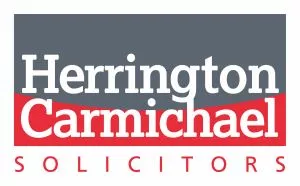Dealing with a silent or absent Landlord
In the realm of property ownership, the concept of an absentee freeholder can present a unique set of challenges for leaseholders. An absentee or silent freeholder situation arises when the owner of the leasehold property is unable to establish contact with their freeholder. While this may initially appear inconsequential, the implications can be far-reaching and potentially problematic for those involved.
At first glance, the absence of a freeholder might seem advantageous to leaseholders. There are typically no demands for ground rent, and leaseholders may assume control over maintaining communal areas, thereby avoiding hefty service charges. However, beneath the surface, the absence of a freeholder can lead to a variety of issues that may escalate over time.
One of the primary challenges associated with absentee landlords is the lack of accountability and oversight. Leaseholders may encounter difficulties in resolving disputes or implementing necessary changes to the property, particularly in the following areas:
Requesting a Lease Extension:
Addressing this typically involves serving the landlord with a Section 42 Notice, a process our solicitors can guide you through. However, complications arise if the landlord cannot be located to receive the notice. In such cases, obtaining a vesting order from the court becomes necessary which is discussed further below.
Freehold Acquisition:
The steps required for this depend on whether the landlord is a limited company or an individual. If the landlord is a company this process is more straightforward as it either exists as registered with Companies House or it does not. However, in the case of an absent individual landlord, proving their absence provides the initial challenge. If this is the case we can organise for a trace to be carried out to locate landlord.
Once the landlord's absence is established, acquiring the freehold necessitates that 50% or more of the leaseholders serve a Section 13 Notice on the landlord. Similarly, if serving notice to an absent landlord proves impossible, resorting to the court for a vesting order will be the next required step.
Property Maintenance by the Landlord:
Another issue when the Landlord is unresponsive is that of communal areas which will be outlined within leasehold and freehold titles.
In instances where the landlord neglects property maintenance, leaseholders can take control by forming a Right to Manage Company. This grants them full responsibility for enforcing covenants, establishing reserve funds, and maintaining communal areas, or they can appoint a managing agent for these tasks.
Selling the Property with an Absent Freeholder
Having an absent landlord can complicate the sale of a lease. Mortgage lenders may hesitate, even if the buyer has secured the proper absent landlord indemnity policy. Additionally, leaseholders who believe they own the property due to a long-term absent landlord may have made alterations that breach lease terms, posing further obstacles to a sale.
An Alternative Remedy: What is a Vesting Order?
A vesting order is granted by the County Court in cases where a landlord fails to respond to the notices served by the leaseholders or is absent completely. This order transfers the responsibility of the landlord to the court, facilitating lease extensions or freehold purchases through statutory processes.
The process varies depending on whether the landlord is absent or simply unresponsive. When the landlord is proven absent, serving tenant notices differs from cases where the landlord is present but not responding.
In summary, if the landlord fails to respond within the specified timeframe, leaseholders can seek court intervention to proceed with lease extension or freehold acquisition, ensuring their rights are upheld.
The content of this article is intended to provide a general guide to the subject matter. Specialist advice should be sought about your specific circumstances.


